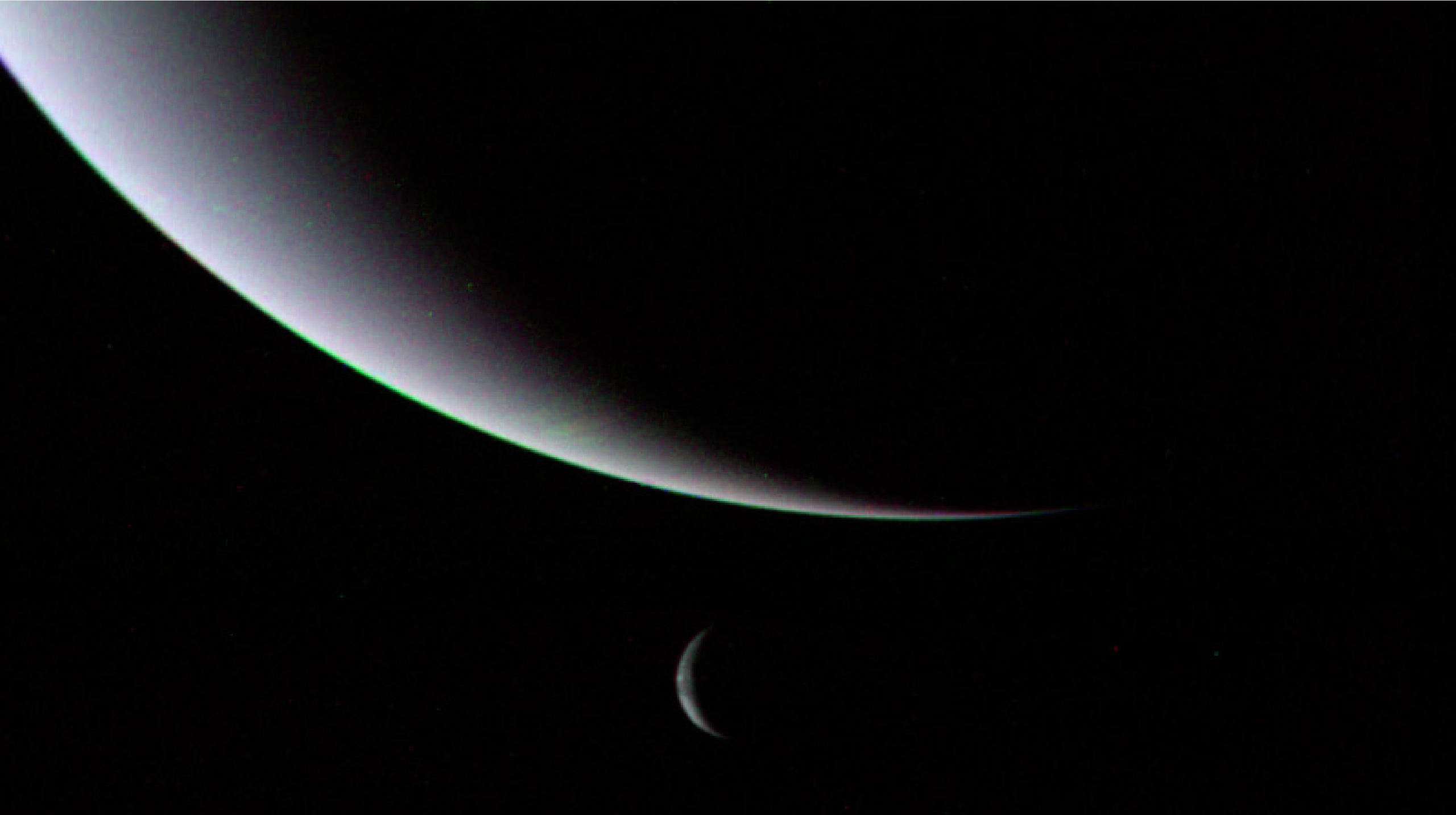Neptune

Distant Ice
Neptune’s windy atmosphere is speckled with huge dark spots that appear and disappear. One large moon and a swarm of smaller ones orbit the planet.
| Distance From Sun | 2.7812 billion mi (30x Earth’s distance from Sun) |
| Structure | rock and metal core, water, methane, and ammonia oceans, gaseous hydrogen |
| Temperature (Planetary Extremes) | Day -370°F (-223°C); Night -370°F (-223°C) |
| Mass | 1 Neptune = 17 Earths |
| Volume | 58 Earths could fit inside Neptune |
| Day | 16 hours, 7 minutes |
| Year | 164 years |
| Axial Tilt | 28.3° |
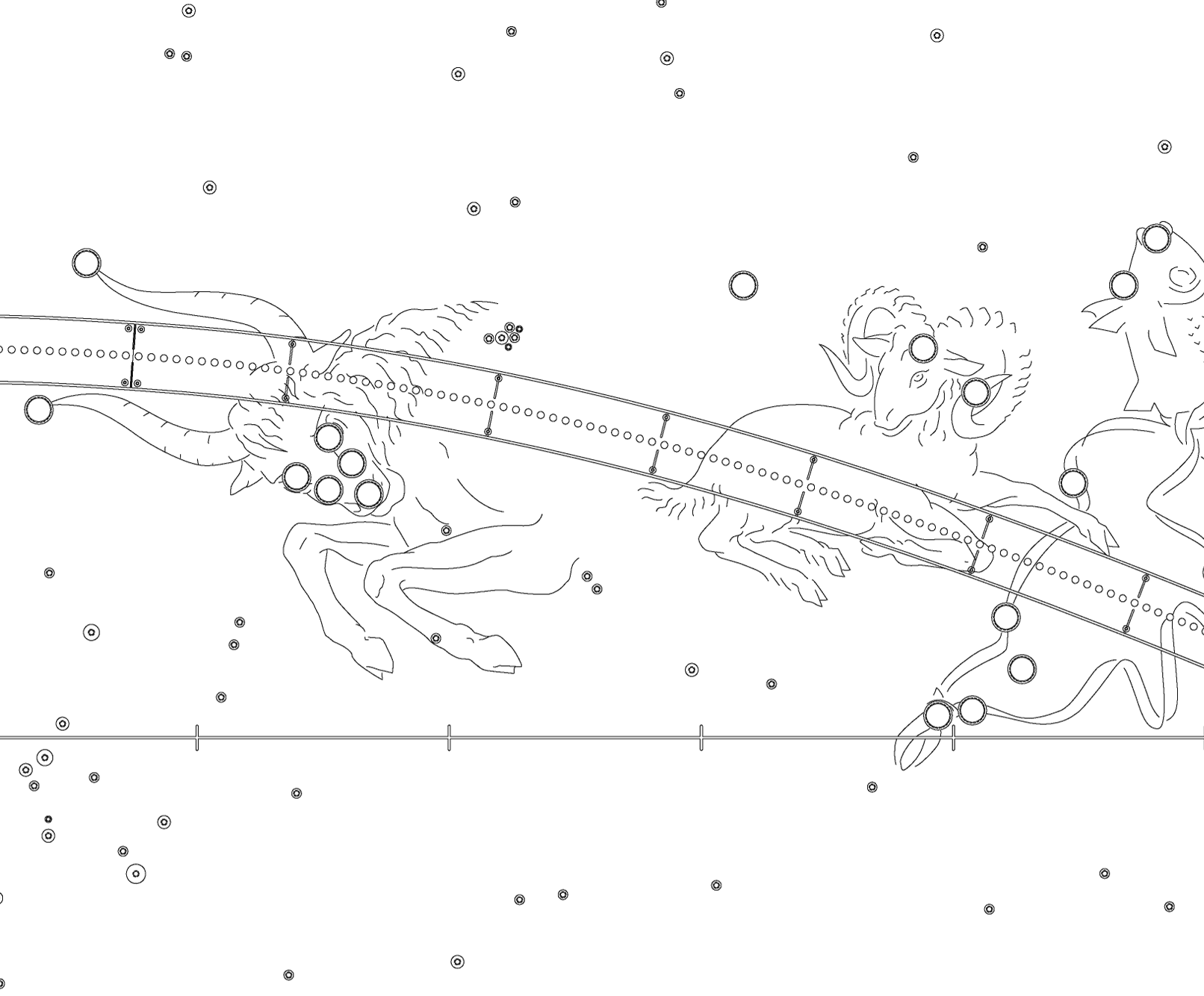

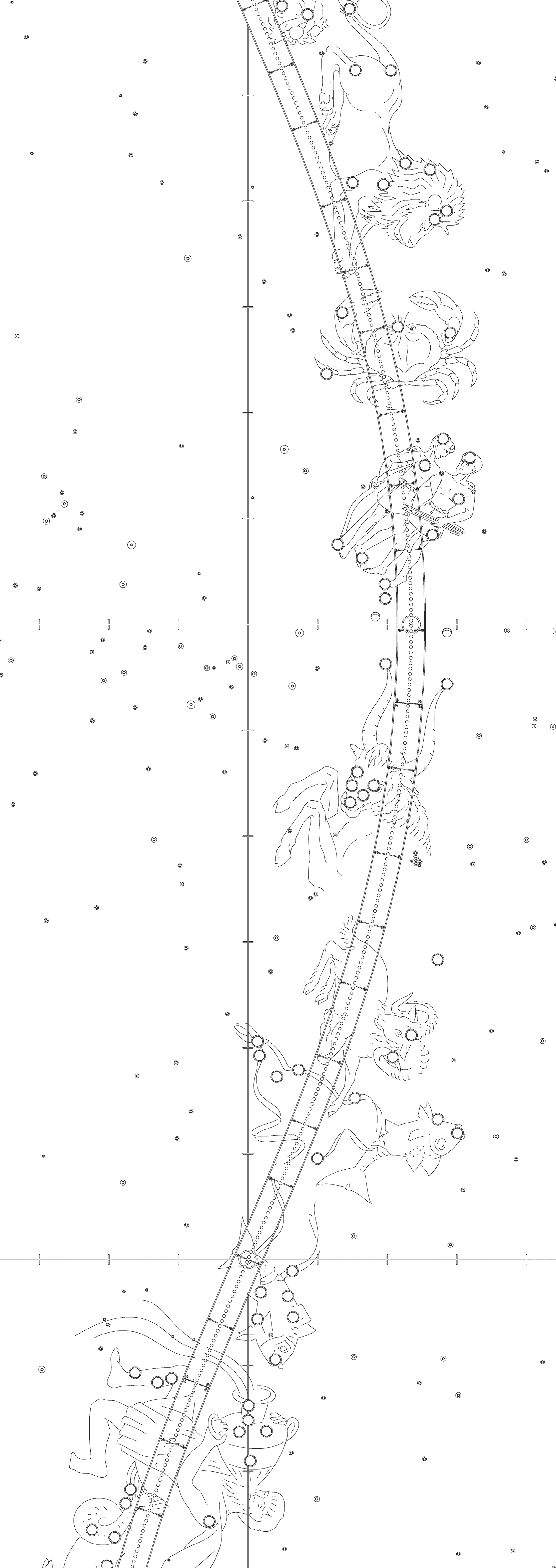

Stormy Methane Weather
The fastest winds in the solar system propel huge storms through Neptune’s frigid deep-blue methane atmosphere.
Inside the Gas Giants
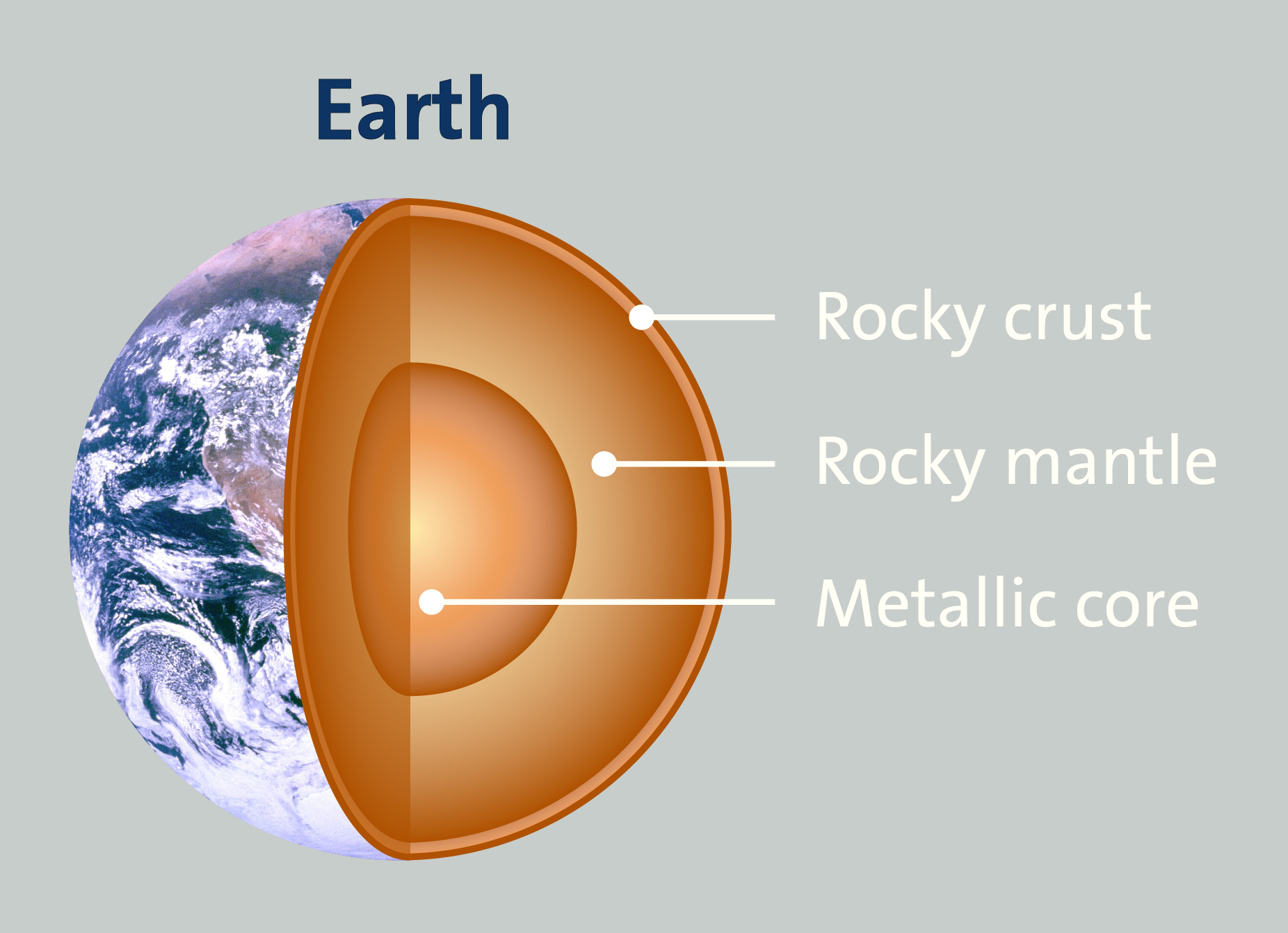
The outer solar-system worlds may be gas giants at their surfaces, but inside they are really gas-slush planets. Each has a solid core, layers of ice, and frigid oceans of liquid hydrogen. We see only the tops of their thick atmospheres, which have swirling clouds and huge storms.
A Cantaloupe Moon
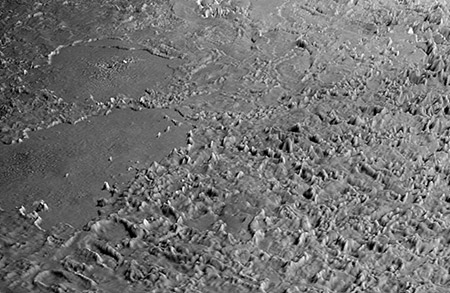
Triton is a study in ice volcanism. It is one of the coldest places in the solar system, with a grooved surface of melted and refrozen ice that looks like cantaloupe skin. Geysers spout nitrogen gas plumes across the frigid landscape.
Gravity’s Relentless Force
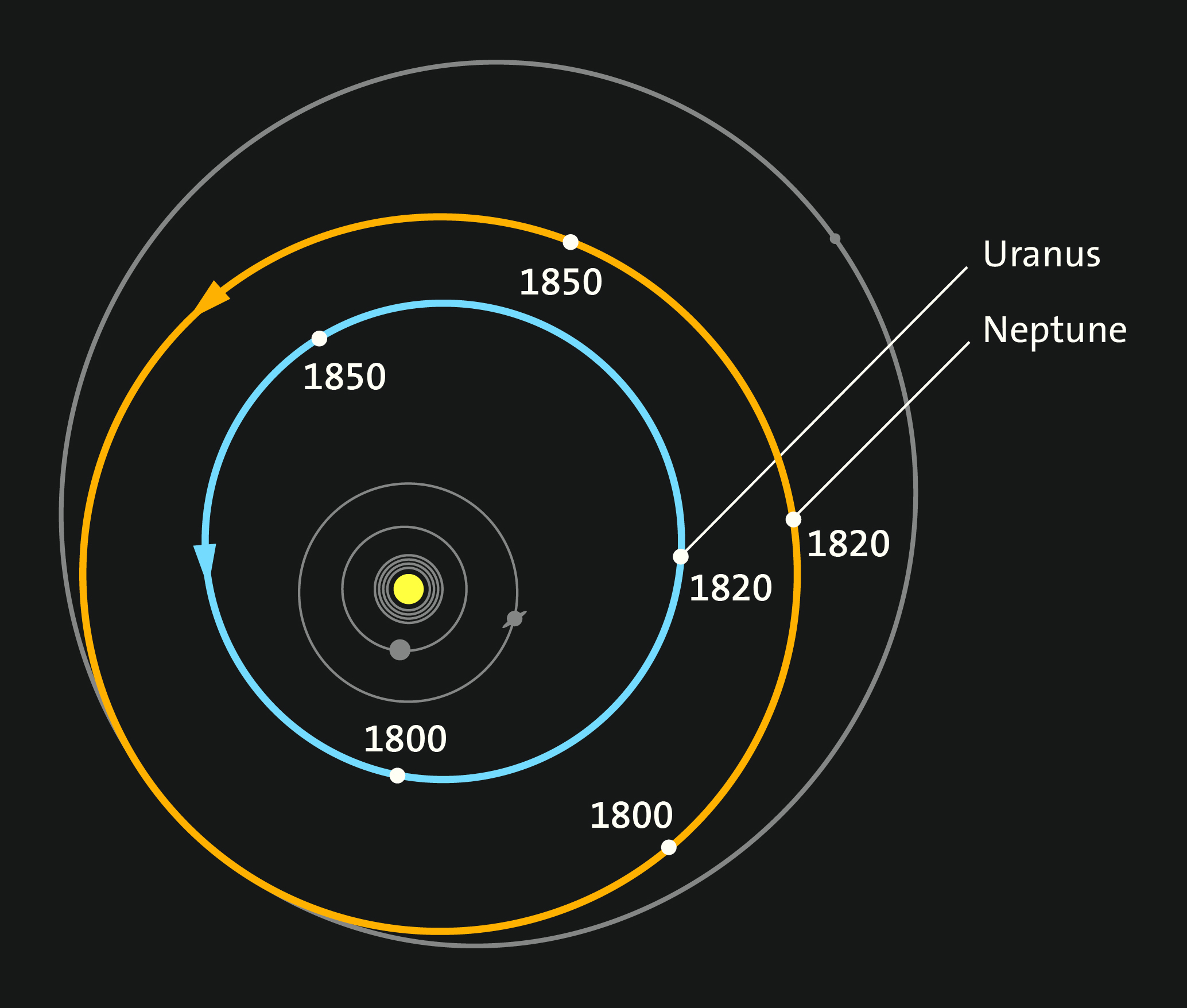
Gravity holds the solar system together. The Sun, which has the strongest gravitational pull, keeps all the planets, asteroids, and comets in orbit. In turn, planets tug on one another and their moons. Neptune was discovered when astronomers noticed that something was disturbing the orbit of Uranus. The moon Triton was captured by Neptune’s gravitational pull and diverted into orbit around the planet.
